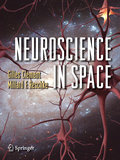
To be aware of the environment, one must sense or perceive that environment. The body senses the environment by the interaction of specialized sensory organs with some aspect or another of the environment. The central nervous system utilizes these sensations in order to coordinate and organize muscular movements, shift from uncomfortable positions, and adjust properly. One relevant question is ‘what is the relative contribution of gravity to these sensory and motor functions?’ This book reviews the effects of space flight on the functioning of the sensory organs primarily used for balance and spatial orientation. Disorientation and malaise so frequently encountered during early exposure to microgravity and on return to Earth are described. Theories and actual data regarding the role of the central nervous system in the adaptation of sensory-motor functions (including the control of posture, eye movements, and self-orientation) to changing environmental gravity levels are explored. Designed for the general scientific reader, this book offers an overview of neuroscience research performed in space Each project and the reason why it was done is describedwith illustrations, rationale and hypothesis, and a summary of results Reference lists guide readers to the published papers from experiments INDICE: Preface.- Foreword.- Brain and Space, The Last Two Frontiers.- Neurosciences: What is it.- History of Space Neurosciences.- Space Neurobiology.-Human Sensory Functions in Space.- Human Behavior and Performance in Space.- Integrative Effects (Combined effects of Neurovestibular functions and other functions, such as…).- Neuroscience in Space: What We Don't Know.- Countermeasures (or How to Live in Space; or Trip to Mars).- References.- Index.
- ISBN: 978-0-387-78949-1
- Editorial: Springer
- Encuadernacion: Rústica
- Páginas: 335
- Fecha Publicación: 01/07/2008
- Nº Volúmenes: 1
- Idioma: Inglés
